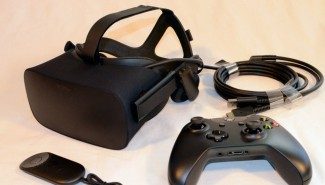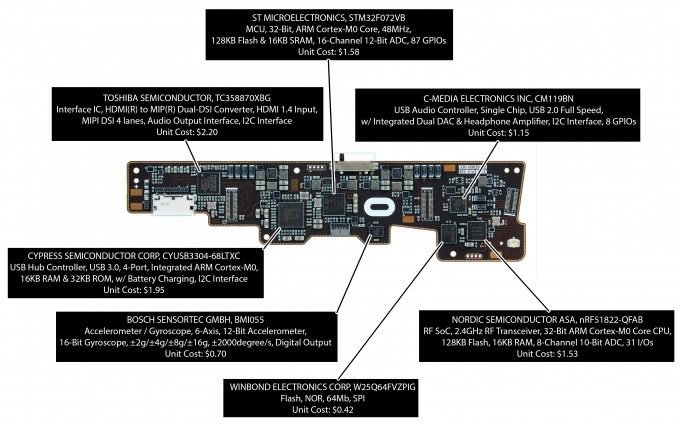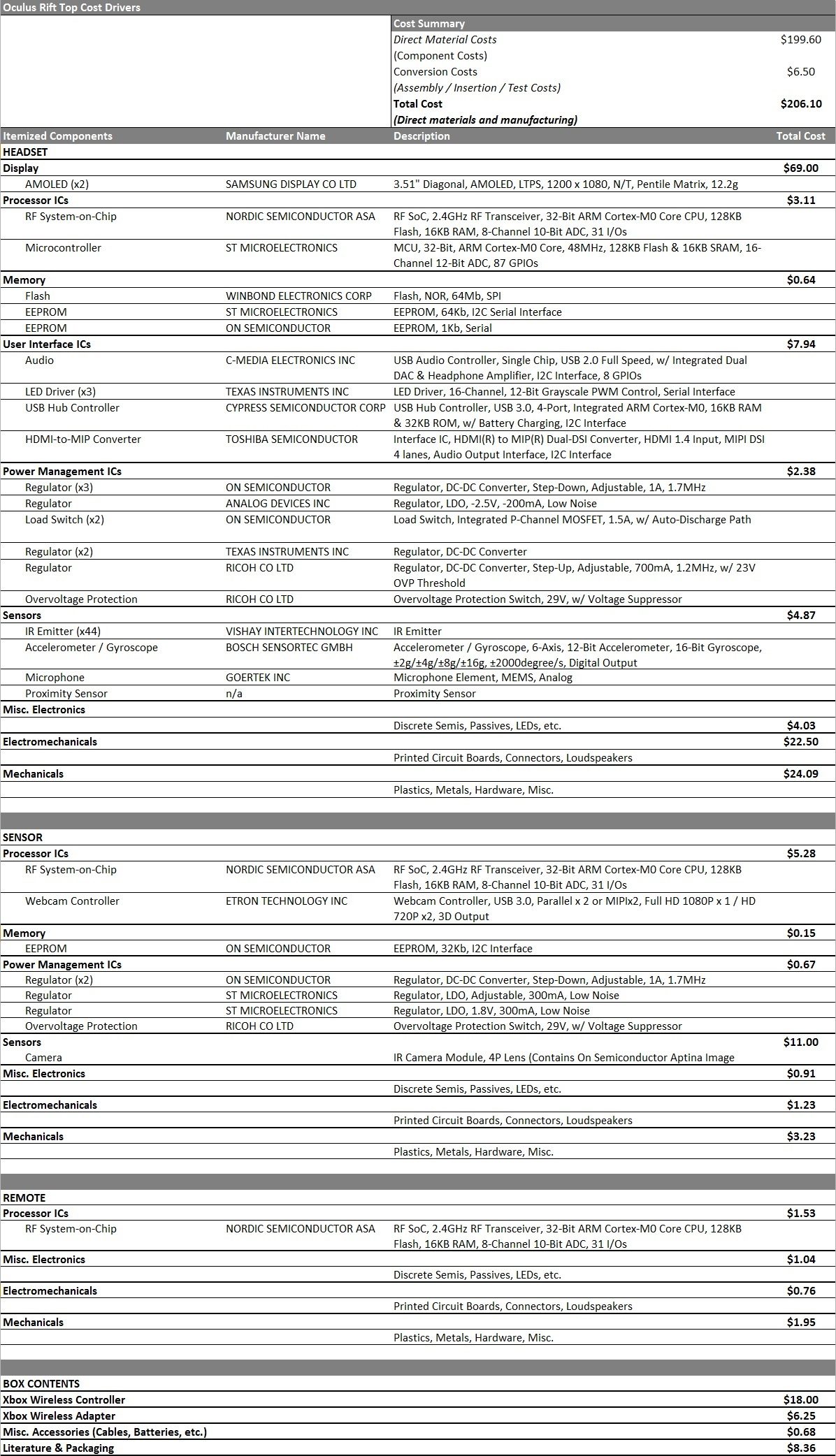In a detailed component teardown, analysis of the components that comprise Oculus’ first consumer VR headset suggest a predictably complex design with the costs of individual parts totalling $200.
The Oculus Rift headset had already passed through numerous prototype iterations before the DK1 formed the basis company’s original Kickstarter campaign. Since then, the Oculus Rift has evolved very much in the public eye, with milestone headset prototypes rolled out to press and consumer trade events regularly since.

This rapid and very public evolution of Oculus’ flagship product is partly indicative of the company’s roots, based firmly in the notoriety and enthusiasm generated from crowdfunding. But it’s also an indication of just how complex and difficult the task of bringing a completely new form of entertainment device to the public was. If you own an Oculus Rift or an HTC Vive headset, they probably represent the most advanced pieces of consumer electronics engineering in your home.
This complexity was reflected in Oculus Rift’s consumer price when it was finally announced in January of this year at CES, with pre-orders priced at $599 before shipping, albeit with both an Xbox One wireless controller and 2 games bundled in as part of the deal. The final price exceeded even Oculus’ own estimations, and again illustrates what an unknown quantity VR was right up until it arrived for sale this year.
Now, a new component teardown from IHS Markit Technology, has revealed just how costly and complicated the consumer Rift is. Every component, down to the individual chips on each of the numerous PCBs found in the device has been individually costed and broken down with the total bill-of-materials coming in at just over $206 – around 35% of the Rift’s $599 price, with assembly and test costs factored. Notably, IHS Markit have included all boxed components, not just the headset itself, in the teardown too. – including the Oculus Remote, Sensor and even the Xbox One wireless controller.

The lion’s share of the actual headset’s cost comes, perhaps predictably, from the dual Samsung AMOLED 1200 x 1080 displays present in the Rift, with a price tag of $69, making up almost half of the unit’s total BOM cost of $140. Electromechanicals, comprising parts like the Rift’s integrated headphones, also present a significant portion of the cost totalling $22.09. Interestingly, the included Xbox One controller and wireless adapter alone represent $24 of the final tally.
All of this of course fails completely to include the years of R&D that went into producing a the Rift, not to mention hugely complex and software development to support the headset, a lot of which simply didn’t exist prior to the recent VR renaissance. Not to mention this report is almost entirely focused on material electronic costs, there’s no mention of the custom Fresnel lenses manufacturing costs, for which you also have to factor in the complex specialist R&D for those too. Finally, this report is based on estimates of individual costs without any knowledge of commercial arrangements based on bulk – we’ve no real way of knowing how much Oculus paid or are paying long term for these parts.
In short, this is an interesting breakdown of the physical makeup of the Oculus Rift headset and included component, but as the saying goes – any VR ‘system’ (as by definition hardware cannot work on its own) is more than the sum of those physical parts. The true cost of getting an individual Oculus Rift to a consumer is something we can only speculate over.








